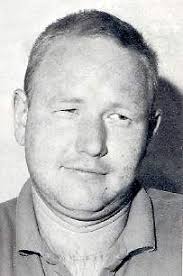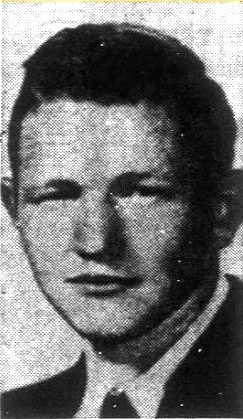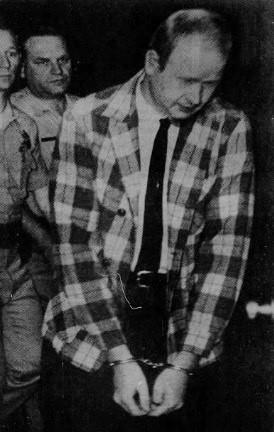
1939 - 2006
Jerome Henry Brudos
Summary
Name:
Nickname:
The Lust Killer / Shoe Fetish SlayerYears Active:
1968 - 1969Birth:
January 31, 1939Status:
DeceasedClass:
Serial KillerVictims:
4Method:
StrangulationDeath:
March 28, 2006Nationality:
American
1939 - 2006
Jerome Henry Brudos
Summary: Serial Killer
Name:
Jerome Henry BrudosNickname:
The Lust Killer / Shoe Fetish SlayerStatus:
DeceasedVictims:
4Method:
StrangulationNationality:
AmericanBirth:
January 31, 1939Death:
March 28, 2006Years Active:
1968 - 1969Date Convicted:
June 27, 1969bio
Jerry Brudos, born on January 31, 1939, in Webster, South Dakota, was the youngest of two sons. His childhood was marked by a strained relationship with his mother, who had desperately wanted a daughter instead of a second son. This disappointment often translated into anger and neglect towards Jerry, which profoundly affected his early development and self-esteem.
From a young age, Jerry exhibited unusual behaviors that concerned those around him. At just five years old, he discovered a pair of high-heeled shoes in a junkyard and became fascinated with them, sparking a lifelong obsession with women's footwear. When his mother discovered him wearing the shoes, she destroyed them and punished him severely, reinforcing a sense of shame and secrecy around his emerging interests.
As Jerry grew older, his fascination with women's clothing and shoes intensified. By the time he reached puberty, he began to steal shoes and underwear from local homes. These actions were more than mere kleptomania; they were tied to deep-seated feelings of anger and powerlessness that he experienced throughout his childhood. His behavior grew increasingly bold and troubling, but his family remained largely oblivious to the full extent of his activities.
Throughout his adolescence, Jerry's relationship with his peers was fraught with difficulty. He was often bullied and ostracized, which only fueled his feelings of isolation and resentment. These experiences compounded the emotional and psychological damage inflicted by his tumultuous home life, further warping his perception of himself and others. Despite these challenges, Jerry showed signs of intelligence and mechanical aptitude, which he would later use in troubling ways. His early years set the stage for the more disturbing behaviors that would emerge in adulthood, reflecting a complex interplay of neglected emotional needs, obsessive interests, and social alienation.

murder story
At sixteen, Brudos dug an underground alcove near his home to act out his fantasies of holding women captive. He lured a neighborhood girl to his bedroom, where he donned a mask and brandished a knife, forcing her to strip and photographing her. He then claimed an intruder had locked him in the barn.
Within a year, Brudos had established a pattern: abducting girls, photographing them at knifepoint, and releasing them under the guise of his fictitious twin brother. None of these girls reported the incidents, as Brudos didn't physically assault them beyond fondling. In April 1956, Brudos assaulted a 17-year-old girl who resisted undressing. A couple intervened, and Brudos was arrested. A search of his room revealed female clothing and Polaroids of teenage girls. He was sent to the Oregon State Hospital for psychiatric evaluations, where doctors diagnosed him with a schizotypal personality disorder, attributing his fantasies to a deep-seated hatred for his mother and women in general.

Brudos married Ralphene Schwinler in 1961, and the couple had two children. Despite his peculiar demands in their marriage, such as having Ralphene perform housework naked except for high heels, Brudos didn't commit known sexual offenses during the early years of their marriage. By the mid-1960s, as his wife became less willing to partake in his fantasies, Brudos began attacking women again. In May 1967, he strangled and raped a young woman while his wife was in the hospital giving birth to their second child.
Between 1968 and 1969, Brudos abducted and strangled four young women, attempting to abduct at least two others. His victims were lured, murdered, dressed in lingerie, and photographed posthumously. Brudos engaged in necrophilia and mutilated three victims, keeping body parts as trophies. Their bodies were disposed of in the Willamette River, though he retained their shoes and underwear in his garage. The bodies of Linda Salee and Karen Sprinker were found in the Long Tom River in May 1969, weighted down with car parts. Investigation linked their murders to Brudos, whose property search revealed incriminating evidence, including photographs of victims and body parts.

Brudos was arrested on May 29, 1969, and confessed to the murders. He detailed his crimes to investigators and psychiatrists, admitting that killing helped him "let off steam." He pleaded guilty to three counts of first-degree murder and was sentenced to life imprisonment. Brudos became a model prisoner, using his skills to maintain the prison's computer system and cable network. Despite several assaults by fellow inmates, he never named his attackers. He continued to fuel his fantasies with mail-order catalogs. He attended numerous parole hearings, always opposed by the victims' families. Brudos died of liver cancer on March 28, 2006, at 67, having served almost 37 years in prison.
His wife, Ralphene, was charged as an accessory but acquitted. She severed all ties with Brudos and relocated with their children, who were initially taken into state care. Brudos was never tried for the murder of Linda Slawson, whose body was never found, though he confessed to her murder. Jan Whitney's body was recovered a month after his conviction, identified through dental records.